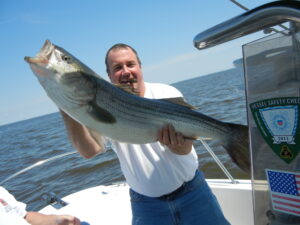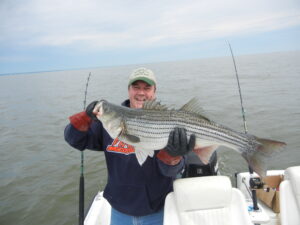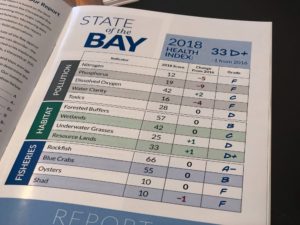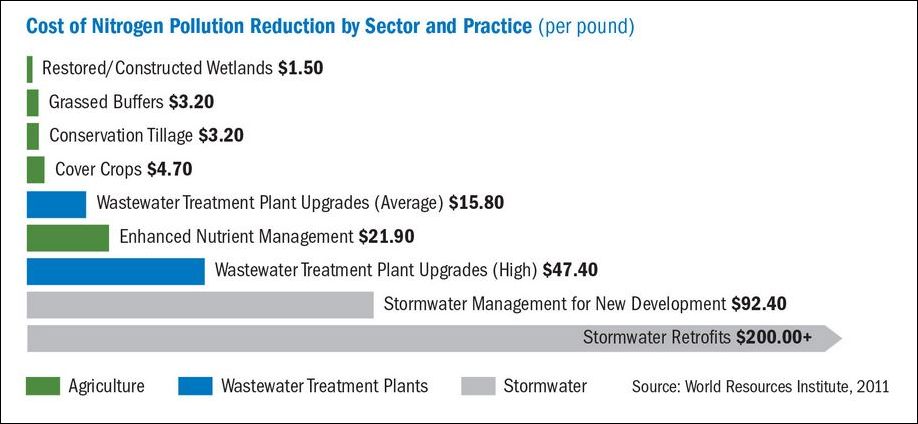 Carpetbagger. Bob Goodlatte is the 13-term congressman from Virginia’s 6th Congressional District who has blessedly chosen to retire this year. In my opinion he represents just about everything that is wrong with the GOP. Born in Holyoke, Massachusetts and educated at Bates College in Maine, Goodlatte somehow avoids the “carpetbagger” moniker so quickly put on Terry McAuliffe by Virginia’s Republicans. He won his congressional seat at age 39 and has spent the last 26 years in Congress. Yet he goes uncriticized as a “politician for life” by the conservative Newt Gingrich types who claim to eschew such long running elected officials. He is a polluter’s best friend with apparently no concern for the property rights of those negatively affected by the pollution he justifies and defends. However, he’ll be gone soon and you’d think we’re past the damage done by this phony conservative. Oh no. Even in his final days in office Goodlatte is actively denying people protection of their property rights despite “property rights” supposedly being a core tenet of conservative Republican dogma. What a farce.
Carpetbagger. Bob Goodlatte is the 13-term congressman from Virginia’s 6th Congressional District who has blessedly chosen to retire this year. In my opinion he represents just about everything that is wrong with the GOP. Born in Holyoke, Massachusetts and educated at Bates College in Maine, Goodlatte somehow avoids the “carpetbagger” moniker so quickly put on Terry McAuliffe by Virginia’s Republicans. He won his congressional seat at age 39 and has spent the last 26 years in Congress. Yet he goes uncriticized as a “politician for life” by the conservative Newt Gingrich types who claim to eschew such long running elected officials. He is a polluter’s best friend with apparently no concern for the property rights of those negatively affected by the pollution he justifies and defends. However, he’ll be gone soon and you’d think we’re past the damage done by this phony conservative. Oh no. Even in his final days in office Goodlatte is actively denying people protection of their property rights despite “property rights” supposedly being a core tenet of conservative Republican dogma. What a farce.
Blowing up the blueprint. The Chesapeake Bay represents not only a national treasure but a working laboratory for the protection of property rights. Certainly right thinking conservatives must believe that allowing a small minority of people and corporations to pollute a public waterway unfairly takes away the property rights of non-polluters. In the case of a waterway that borders multiple states, one would think that sensible and honest conservatives would insist that the federal government protect the property rights of all the states. Isn’t this both a core tenet of conservatism and a reasonable construct of property rights? Not according to Bob Goodlatte.
The Chesapeake Bay watershed states have claimed to be working together to clean up the Bay for the past forty years. For 31 of those years the effort failed as various states simply ignored their clean up commitments. Then, in 2009, the EPA was authorized to provide scientific leadership and oversight for a new clean-up plan — the Chesapeake Bay Clean Water Blueprint. Progress has been substantial since that time. Despite Virginia being a major beneficiary of the blueprint, one of our own Congressmen has put forth an amendment to curtail the EPA’s role in this effort. You guessed it, ole Bob Goodlatte sponsored an amendment to H.R. 6147 forbidding the EPA from spending money to provide firm, science-based accountability over the blueprint. As a press release from the Chesapeake Bay Foundation puts it, “Congressman Goodlatte’s amendment would keep EPA from using any funds to provide this “firm accountability” if a state fails to meet its pollution-reduction goals set under the Blueprint.” So much for preservation of property rights from this so-called conservative.
Hall of shame. Bob Goodlatte’s amendment for the protection of raw sewage in public waters passed the House of Representatives by a vote of 213 to 202. Seven of Virginia’s Representatives (Wittman, Taylor, Scott, McEachin, Beyer, Comstock and Connolly) repudiated Sideshow Bob and his amendment by voting against it. However, four of our so-called representatives (Garrett, Goodlatte, Brat and Griffith) couldn’t find the mental acuity to understand how a clean Chesapeake Bay might help the Commonwealth of Virginia. While it’s no excuse for their buffoonery Garrett, Goodlatte and Griffith have districts far from the Bay. Brat, by comparison, has a district bordering the city of Richmond. What are the voters in the 7th district thinking? Will “Kepone Dave” get re-elected? Here’s a good article about the cleanliness of the James River in Richmond (warning: true but disgusting content)
Going forward. The congressional seat being vacated by Bob Goodlatte’s retirement will be contested by Ben Cline (R) and Jennifer Lewis (D). Cline is a member of the General Assembly and long time Goodlatte toady. Lewis is a bleeding heart liberal with minimal political experience. So far, Lewis has raised $72,000 to Cline’s $787,000. The Cook Partisan Voter Index for the district is R+13. Sadly, Cline will almost certainly win and continue the anti-conservative, anti-Virginia activities of his predecessor.
— Don Rippert



 Between a rock(fish) and a hard place. Striped bass, locally known as rockfish, migrate up the coast of the Atlantic each spring to spawn. The biggest rockfish come into the Chesapeake Bay to mate and then leave the Bay to resume their trip north. Other smaller rockfish remain in the Bay. The period of time when the big oceanic rockfish come into the Bay is known to fishermen as the Spring Trophy Season. Regulations are strict but anglers flock to the Bay in the hope of landing a big striped bass. The trophy season starts after the spawn and runs from May 1 to June 15 in Virginia. At least, that’s usually the plan. Unfortunately, a recently completed fish assessment has shown a precipitous drop in rockfish. Scientists blame this on overfishing and are considering asking the Virginia Marine Resources Commission to ban fishing during this year’s trophy season. This is a startling development given the seemingly good news about the Bay in general and rockfish in particular over recent years.
Between a rock(fish) and a hard place. Striped bass, locally known as rockfish, migrate up the coast of the Atlantic each spring to spawn. The biggest rockfish come into the Chesapeake Bay to mate and then leave the Bay to resume their trip north. Other smaller rockfish remain in the Bay. The period of time when the big oceanic rockfish come into the Bay is known to fishermen as the Spring Trophy Season. Regulations are strict but anglers flock to the Bay in the hope of landing a big striped bass. The trophy season starts after the spawn and runs from May 1 to June 15 in Virginia. At least, that’s usually the plan. Unfortunately, a recently completed fish assessment has shown a precipitous drop in rockfish. Scientists blame this on overfishing and are considering asking the Virginia Marine Resources Commission to ban fishing during this year’s trophy season. This is a startling development given the seemingly good news about the Bay in general and rockfish in particular over recent years. School daze. The Chesapeake Bay Foundation(CBF) recently issued it biannual State of the Bay Report. The report can be found
School daze. The Chesapeake Bay Foundation(CBF) recently issued it biannual State of the Bay Report. The report can be found  Background: Republican Rep Bob Goodlatte (Va – 6th) has proposed an amendment to an appropriations package which would forbid the EPA from using federal funds to take action against bay states that fail to meet pollution-reduction targets set by the EPA and agreed-to by the states. The amendment is to the 2019 Interior, Environment, Financial Services and General Appropriations Act. The amended bill passed the U.S. House of Representatives 213 to 202. The same bill (without the Goodlatte Amendment) was passed by the US Senate 92 to 6.
Background: Republican Rep Bob Goodlatte (Va – 6th) has proposed an amendment to an appropriations package which would forbid the EPA from using federal funds to take action against bay states that fail to meet pollution-reduction targets set by the EPA and agreed-to by the states. The amendment is to the 2019 Interior, Environment, Financial Services and General Appropriations Act. The amended bill passed the U.S. House of Representatives 213 to 202. The same bill (without the Goodlatte Amendment) was passed by the US Senate 92 to 6. Carpetbagger. Bob Goodlatte is the 13-term congressman from Virginia’s 6th Congressional District who has blessedly chosen to retire this year. In my opinion he represents just about everything that is wrong with the GOP. Born in Holyoke, Massachusetts and educated at Bates College in Maine, Goodlatte somehow avoids the “carpetbagger” moniker so quickly put on Terry McAuliffe by Virginia’s Republicans. He won his congressional seat at age 39 and has spent the last 26 years in Congress. Yet he goes uncriticized as a “politician for life” by the conservative Newt Gingrich types who claim to eschew such long running elected officials. He is a polluter’s best friend with apparently no concern for the property rights of those negatively affected by the pollution he justifies and defends. However, he’ll be gone soon and you’d think we’re past the damage done by this phony conservative. Oh no. Even in his final days in office Goodlatte is actively denying people protection of their property rights despite “property rights” supposedly being a core tenet of conservative Republican dogma. What a farce.
Carpetbagger. Bob Goodlatte is the 13-term congressman from Virginia’s 6th Congressional District who has blessedly chosen to retire this year. In my opinion he represents just about everything that is wrong with the GOP. Born in Holyoke, Massachusetts and educated at Bates College in Maine, Goodlatte somehow avoids the “carpetbagger” moniker so quickly put on Terry McAuliffe by Virginia’s Republicans. He won his congressional seat at age 39 and has spent the last 26 years in Congress. Yet he goes uncriticized as a “politician for life” by the conservative Newt Gingrich types who claim to eschew such long running elected officials. He is a polluter’s best friend with apparently no concern for the property rights of those negatively affected by the pollution he justifies and defends. However, he’ll be gone soon and you’d think we’re past the damage done by this phony conservative. Oh no. Even in his final days in office Goodlatte is actively denying people protection of their property rights despite “property rights” supposedly being a core tenet of conservative Republican dogma. What a farce.

